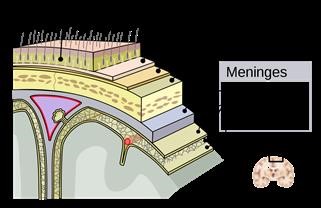The Infertility Organization
What Causes Infertility to Woman
We have the complete source for total information and resources for What Causes Infertility to Woman on the Internet.
Benign prostatic hyperplasia does not affect fertility. Ejaculatory Duct Obstruction. (PDF, 3 MB) The Journal of Urology, 1980. This can result from: A medical condition: This could be a testicular infection, cancer, or surgery.
The Relationship of Abnormal Semen Parameters to Male Fertility. (PDF, 4 MB) Human Reproduction, 1989. If the epididymis is blocked, sperm may not be ejaculated properly. Medical conditions Some medical conditions can affect fertility. A variety of disorders ranging from hormonal disturbances to physical problems, to psychological problems can cause male infertility. Although many treatment options are now available, in many cases treatment will not work. In many instances, male infertility is caused by testicular damage resulting in an inability of the testicle to produce sperm. Once damaged, the testicle will not usually regain its sperm-making capabilities; this aspect of male infertility is analogous to menopause (though not natural like menopause) for women and cannot usually be treated. Despite medicine�s limited ability to treat male infertility, many successful treatment options are available for its many causes. Besides testicular damage, the main causes of male infertility are low sperm production and poor sperm quality. The Causes of Male Infertility Male infertility has many causes--from hormonal imbalances, to physical problems, to psychological and/or behavioral problems. Moreover, fertility reflects a man�s �overall� health. Men who live a healthy lifestyle are more likely to produce healthy sperm. The following list highlights some lifestyle choices that negatively impact male fertility--it is not all-inclusive: · Smoking--significantly decreases both sperm count and sperm cell motility. · Prolonged use of marijuana and other recreational drugs. · Chronic alcohol abuse. · Anabolic steroid use--causes testicular shrinkage and infertility. · Overly intense exercise--produces high levels of adrenal steroid hormones which cause a testosterone deficiency resulting in infertility. · Inadequate vitamin C and Zinc in the diet. · Tight underwear--increases scrotal temperature which results in decreased sperm production. · Exposure to environmental hazards and toxins such as pesticides, lead, paint, radiation, radioactive substances, mercury, benzene, boron, and heavy metals · Malnutrition and anemia. · Excessive stress!
Here are Some More Details on Infertility Treatments Not Covered by Insurance

Extra Resources For Infertility Treatments Not Covered by Insurance
The FAST study: fertility assessment and advice targeting lifestyle choices and behaviours: a pilot study. The starting dose is 5 mcg per pulse intravenously or 5-25 mcg subcutaneously.
Extra Resources For Infertility Support Group Nashville
Microscopic Vasectomy Reversal. (PDF, 31 MB) Fertility and Sterility, 1977. An increased volume is rarely observed and is often caused by a contaminant, such as urine. Surgical procedures are now rarely used because of the high success rate of other infertility treatments. IUI: Fertility doctors may also recommend intrauterine insemination or IUI. A doctor or WHNP takes a medical history and gives a physical examination. Chromosomal abnormalities An estimated 6-13% of infertile men have chromosomal abnormalities (compared with 0. BMI (body mass index) may be a significant factor in fertility, as an increase in BMI in the male by as little as three units can be associated with infertility.
Even more Details About Infertility Treatments Not Covered by Insurance
A small Steering Committee with six Expert Working Group Chairs, local Swiss experts, as well as Presidents, Chairpersons and representatives of ASRM1, ESHRE2, FIGO3, GFMER4, ICMART5 and IFFS6 came to the table to share experiences, to present their current (or in-process) guidelines and to recommend a collaborative process for moving forward to generate global guidelines. In this case, symptoms can also include: Skin changes, including more acne Changes in sex drive and desire Dark hair growth on the lips, chest, and chin Loss of hair or thinning hair Weight gain Other symptoms of disorders that may lead to infertility include: Milky white discharge from nipples unrelated to breastfeeding Pain during sex Many other things can be related to infertility in women, and their symptoms vary. Ideally, the cause of the infertility is reversible and then conception can result from natural sex. Paternal age > or = 40 years: an important risk factor for infertility. Treatment is with exogenous gonadotropins and iron-chelating therapy. Additional tests to determine sterility include blood tests, an ultrasound of the ovaries, hysterosalpingography to check for physical problems of the uterus and fallopian tubes. Breeding with a proven fertile male must occur at the optimal time for the female. Histologic endometrial dating is not considered reliable nor is it predictive of fertility. Sterilisation involves blocking the fallopian tubes to make it impossible for an egg to travel to the womb. Evaluating the Infertile Male – Part 1. (PDF, 5 MB) Contemporary OB/GYN, 2004. A urinary LH kit is a practical way to monitor these patients. Most typical are decreased libido, erectile dysfunction, orgasmic dysfunction, and ejaculatory dysfunction. Luciano AA, Peluso J, Koch EI, Maier D, Kuslis S, Davison E.
Previous Next
See also
Documentary on Infertility
Female Infertility Best Remedy
Infertility Tubal Origin Icd 10